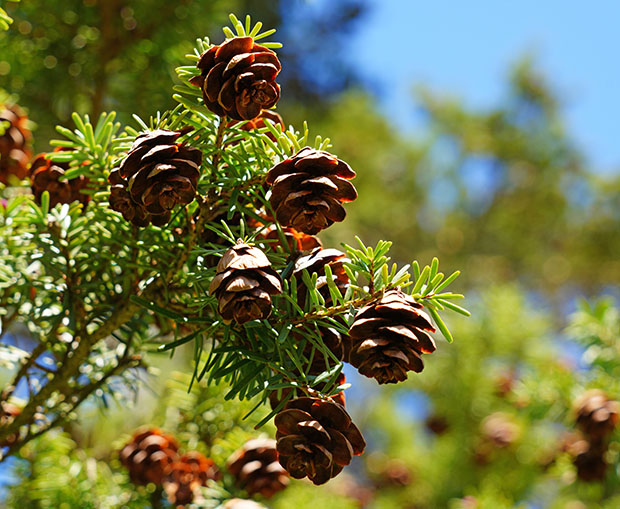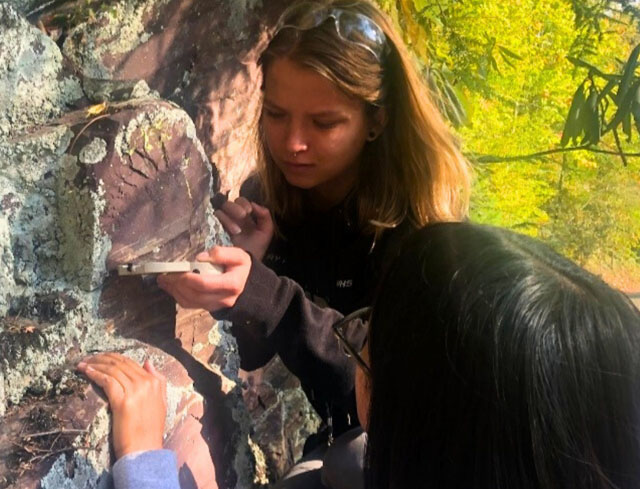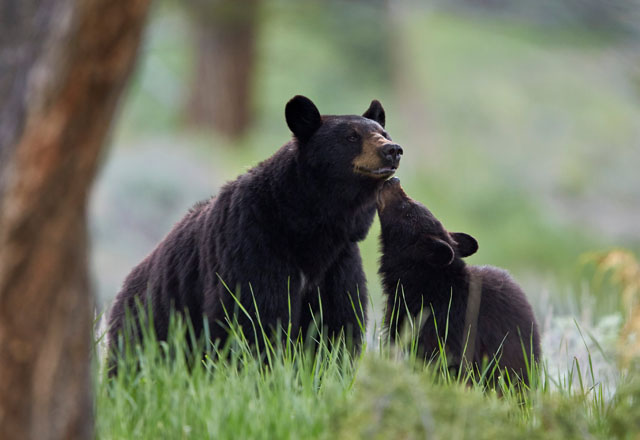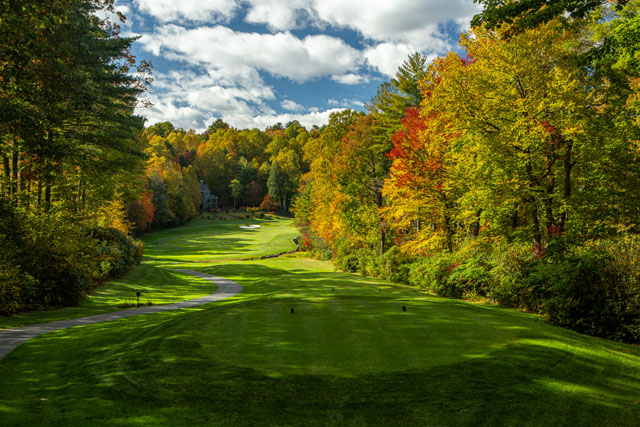Saving the Eastern and Carolina Hemlocks
04 Apr 2022
A review of current status and practices
By: Kristin E. Landfield

The eastern hemlock is one of the most elegant trees in the forests of North America, certainly so among our native conifers. Its fine needles are held flat on the pliable branches, creating a layered effect that drapes gracefully towards the ground. They’re iconic covered in snow and tipped with a vivid fresh green once the temperatures warm in spring. Being shade tolerant, young seedlings dot the understory of the forest alongside their older forebears that tower high above. Hemlocks can live hundreds of years and are one of the key agents within the Appalachian ecosystem. They host habitat for numerous species in the microbiome, creating the building blocks for a healthy forest. Their protective canopy regulates soil and stream temperature and provides shelter to many species. Changes in stream temperature by as little as a couple of degrees heavily affect populations within a healthy stream, including those of local trout and the unique salamanders native to western North Carolina. Being a large evergreen, hemlocks consume and respirate water throughout the year, in turn regulating water dynamics and stream flow on a subtle yet essential level. Without them, forest diversity is lost to what are known as secession species that shoot up quickly in the absence of old-growth hemlock forest. Such species can’t play the same role as the stately tree.
Hemlocks have been important in the Appalachian economy as well. They have provided timber and pulp for generations, are sold in nurseries and their protection of streams aids in fishing. They are a large component in forestry science, and their fortification of the native landscape, rivers and presence in the montane scenery aid in the recreational economy. Here in the southern Appalachians, the eastern hemlock (Tsuga canadensis) and the Carolina hemlock (Tsuga caroliniana) are the two species of the nine-member genus that grow natively. To note, neither of these species is the famed Hemlock from which Socrates obtained poison (the poison is derived from an herbaceous plant of a different genus Conicum maculatum), but the smell of the crushed conifer needles is said to resemble the toxic herbaceous plant.
Unfortunately, these two species, the ones so essential to this region, are under serious threat throughout eastern North America. The hemlock woolly adelgid (HWA) is a small insect closely related to aphids that has created severe devastation throughout eastern populations. The HWA (Adelges tsugae) was first identified in Virginia in 1951, but because it had not created widespread problems, there was no attempt to research and manage it until it started creeping through state and national forests in the 1980s. HWA was likely introduced to eastern hemlocks via an Asian species of hemlock brought for ornamental use. The HWA is a native pest in the Pacific Northwest and parts of Asia where these species have natural protections against the pest. Because it’s an alien species to eastern forests, our native hemlocks did not co-adapt with the HWA; consequently, there are no natural protective systems developed in these two species, nor are there native predators to manage the populations. Moreover, the climate in the southern Appalachians allows for two annual life cycles of the HWA (as opposed to a single annual cycle in colder locales), making their spread far more prodigious in our southern forests.
For most of its life cycle, the HWA is sessile, meaning stationary after planting itself on the part of the tree where it feeds. Once hatched, the nascent insects crawl to the tender, freshest needles and latch onto the place the stem meets the needle. Earning its name “woolly,” the HWA creates a white woolly protective covering that is easy to identify on the underside of lower branches. The insect alone is tiny and hard to identify with the naked eye. Because it is stationary, the insect is mostly spread by wind, birds, animals and larger infected specimens dropping their cones down on younger trees. In the early 2000s, when HWA began to spread further south, its pace of infestation rapidly increased. By 2005, many forests in western North Carolina showed affected populations, with large dead hemlocks visible from spectacular mountain vistas. Subsequently, there was a severe drought in 2006-2007, which further enervated the trees and made them more vulnerable to HWA (along with other maladies accompanying drought).
By then, concerted efforts were being placed on researching and managing HWA, with urgent effort to protect these beloved trees. Homeowners can treat small trees infected with HWA using natural horticultural oils and soaps. Unfortunately, such application processes are untenable on tall trees and larger tracts of forest. Chemical intervention is still the only effective protection against HWA on larger specimens. In most cases, chemical foliar sprays are strongly discouraged due to concerns about chemical drift and other ecological detriments. There are several highly effective alternative methods that use systemic insecticides applied via soil drench, trunk injection, or direct application to trunks of trees. The most common method is a soil drench of imidacloprid or dinotefuran. Imidacloprid is usually the favored chemical for a tree with lower HWA populations because it tends to last longer. Soil drenches should not be applied to trees growing near water—the chemical can easily leach into the nearby stream or pond. Instead, trunk injections of imidacloprid or trunk sprays with dinotefuran are common treatments. Chris Hastings, ISA Board Certified Master Arborist and owner of Arbormedics, indicates that trunk sprays of dinotefuran (Safari) can be a more rapid treatment for a currently infected tree and are easier to apply than trunk injections. Safari is also effective against elongated hemlock scale as well as HWA. For all methods, proper application techniques are essential for the treatment to provide systemic effects. It is always important to follow label guidelines to ensure efficacy and diminish overuse that can harshly impact the ecosystem. Fortunately, hemlocks are wind-pollinated, meaning that no live pollinators (bees, butterflies, moths, etc.) are involved in reproduction and, therefore, will not be affected by chemical applications to hemlocks. This is a genuine concern for the chemical treatment of any plants pollinated by other species.
All of these techniques require effort, attention and monitoring. Perhaps the most important aspect of treatment and protection of hemlocks is to maintain large enough native populations for genetic resilience via natural reproduction. This allows for hybrid vigor and potential for adaptations to naturally protect the species from HWA. Just as the co-adapted trees in Asia and the Pacific Northwest have genetic protection against infestation, natural selection allows for trees to develop their own defenses. For this to happen, there must exist robust populations of mature trees to develop reproductive resilience. Is the effort worth it? Walk in the sacred woods on this plateau, recognize the elegance of these noble trees, witness the carcasses of dead hemlocks; these magnificent mountains tell us that it is.
For more information on treatment options and protection, contact:
Asheville based Hemlock Restoration Initiative
Appalachian Tree Care has been treating HWA in the area for nearly 20 years. They seek an approach that is effective and environmentally responsible. Owner and arborist Ryan Franks is an excellent local resource for responsible protection of hemlocks, especially in residential and commercial landscapes. www.appalachiantreecare.com













